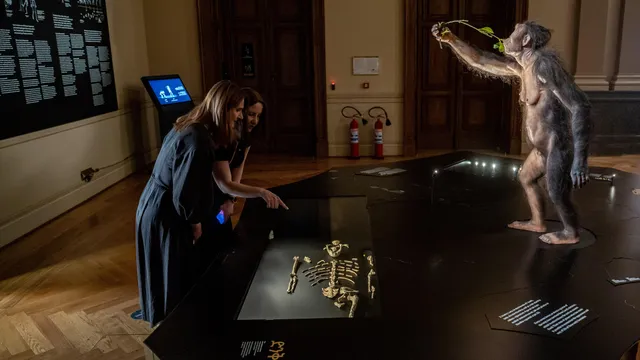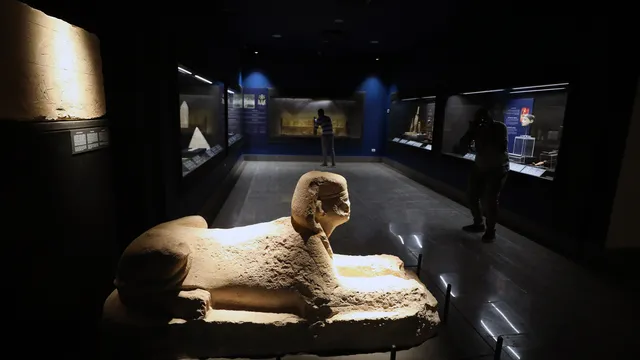The 3.18 million bone fragments of human ancestor Lucy, which rarely leave Ethiopia, were exhibited in Prague today. Czech Prime Minister Petr Fiala welcomed the "first" display of the fossils in Europe.
The ancient remains of the Afar Australopithecus were discovered in Ethiopia in 1974. The find was the most complete ever made at the time and revolutionized our understanding of humanity's ancestors.
At the Czech National Museum, Lucy's remains are displayed alongside Selam, a fossil of an Australopithecus baby who lived about 100,000 years earlier than Lucy and was discovered at the same site 25 years later.
The fossils, provided by the National Museum of Ethiopia in Addis Ababa, arrived in Prague on August 15 under strict security measures.
"Both skeletons are among the most valuable exhibits of world heritage, and they are being exhibited for the first time in a European country," Fiala said at the grand opening ceremony with a military brass band.
Ethiopian Tourism Minister Selamawit Kassah said the exhibition was unique because Lucy and Selam were being displayed together for the first time, "outside Ethiopia, of course."
"Ethiopia is unrivalled in terms of its continuous fossil finds of human ancestors spanning 6 million years, with 14 specimens of human ancestors from Australopithecus to Homo sapiens discovered in Ethiopia," she added.
The 52 fragments will be on display for 60 days as part of the exhibition "Humans and Their Ancestors." It will be open to visitors later today, AFP reported.
Donald Johanson, who discovered Lucy with his team, and Zeresenay Alemseged, who discovered Selam, also attended the unveiling in Prague.
Johansson praised Africa as the place where "we first diverged from African apes, where we first stood upright, where our brains first grew, where we first began to make art and craft specialized stone tools, and where we, as we call ourselves, Homo sapiens, evolved."
"We all have a common origin, we are united by our past. And I think that's an extremely important reminder for humanity today," he added.
In its current form, Lucy consists of fossilized tooth remains, skull fragments, parts of the pelvis, and the femur.
Lucy's fossilized skeleton, 1.1 meters tall and weighing 29 kilograms, left Ethiopia for the last time between 2007 and 2013, when it toured museums in the United States.
The hominid was named after the Beatles song "Lucy in the Sky with Diamonds," which the team listened to after the discovery.
Lucy walked on two legs and is believed to have died between the ages of 11 and 13, considered old for this species.
Long considered the oldest human ancestor ever found, Lucy was dethroned from this status in 1994 after the discovery, also in Ethiopia, of Ardi, a female Australopithecus afarensis who lived 4.5 million years ago.
In 2001, the skull of Toumai, dated to 6 or 7 million years ago, was discovered in Chad, suggesting that the human family may have much deeper roots than previously thought.
In a 2016 study, researchers claimed that Lucy had strong upper limbs, suggesting that she regularly climbed trees and slept in the branches.
The study concluded that she had relatively weak legs that were not used for climbing and were ineffective for walking.
An analysis of a fracture in one of Lucy's bones suggests that she probably died as a result of falling from a tall tree. | BGNES

 Breaking news
Breaking news
 Europe
Europe
 Bulgaria
Bulgaria







